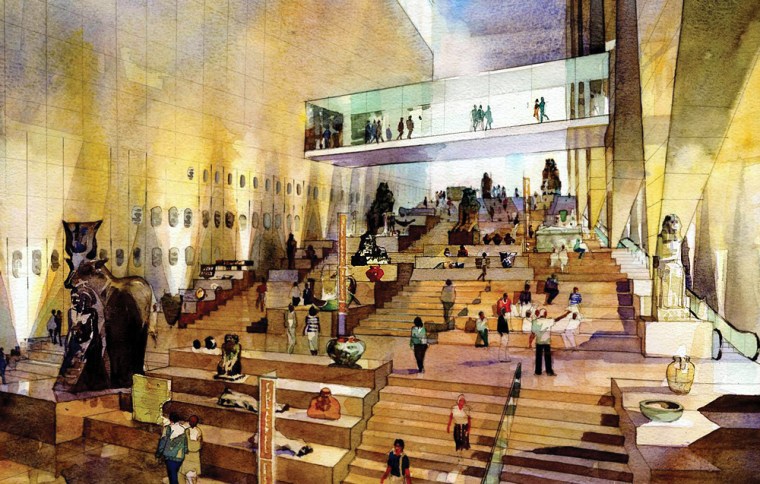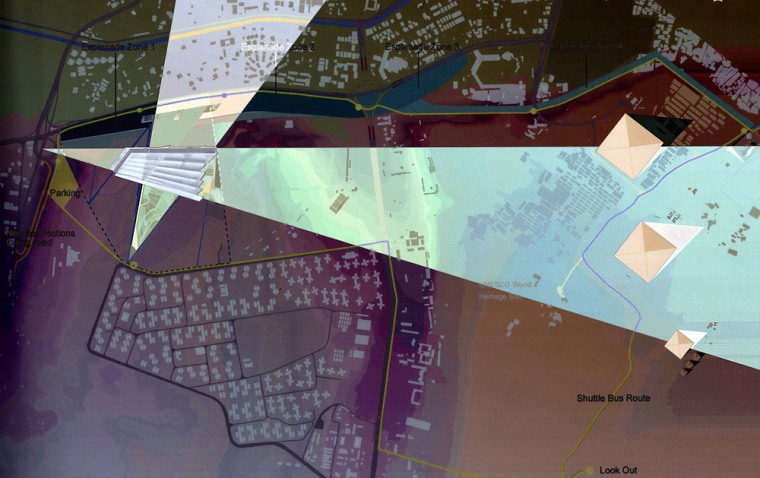A giant museum with a glowing alabaster facade and a roof in alignment with the nearby pyramids will house King Tut’s mummy and treasures along with thousands of other artifacts, according to a design unveiled Wednesday.
Wednesday’s design was the latest step in the government’s ambitious $500 million project for the Grand Museum of Egypt, which would provide a single spot at the foot of the pyramids for 100,000 artifacts, many of which have been sitting in warehouses for decades with no room to display them.
Egypt is negotiating with the Japanese Bank for International Development for a loan for the project and plans its own fund-raising drive. The $40 million that Egypt hopes to raise from a current tour of King Tutankhamun artifacts in the United States will go toward the project.
Officials hope to start building on the site later this year and to complete construction by 2009, the Supreme Council for Antiquities said.
The museum will be set embedded in a desert plateau at the edge of the Nile Valley, a little more than a mile from the Great Pyramids, according to the model, designed by the Irish firm Heneghan.Ping Architects.
The dramatically angled roof is aligned with the monuments: A line drawn from one edge of the roof would touch the tip of the pyramid of Cheops — the largest of the three — and the other edge points toward peak of the smaller Khefre pyramid.
The 600-yard (600-meter) facade of the building will be covered with translucent alabaster. “At night, this will be illuminated and glow,” said Yasser Mansour, the head of the Egyptian government’s technical committee for the project.
A large triangular gate in the facade leads into the museum.
“The museum is situated at the juncture where the fertile valley meets the desert, which for the ancient Egyptians was the land of life after death,” Mansour said. “This will be Tut’s final resting place.”
Artifacts from all over
The museum will house King Tut’s mummy and the nearly 4,000 artifacts discovered in his tomb in 1922.

The Sun Boats, believed used to transport Cheops’ body and now housed in their own museum near the pyramids, will be brought into the Grand Museum, as will an 83-ton statue of Ramses II currently located in a busy square in front of Cairo’s main train station.
Cairo’s existing Egyptian Museum, which turned 100 last year, was originally designed to exhibit about 5,000 artifacts. With too little exhibition space, many of the more than 100,000 pharaonic, Coptic, Greco-Roman and Islamic artifacts now in the government’s collection are stored in basements and warehouses.
Egyptian officials say they hope the new museum at the pyramids will attract an additional 3 million visitors a year to the country.
